
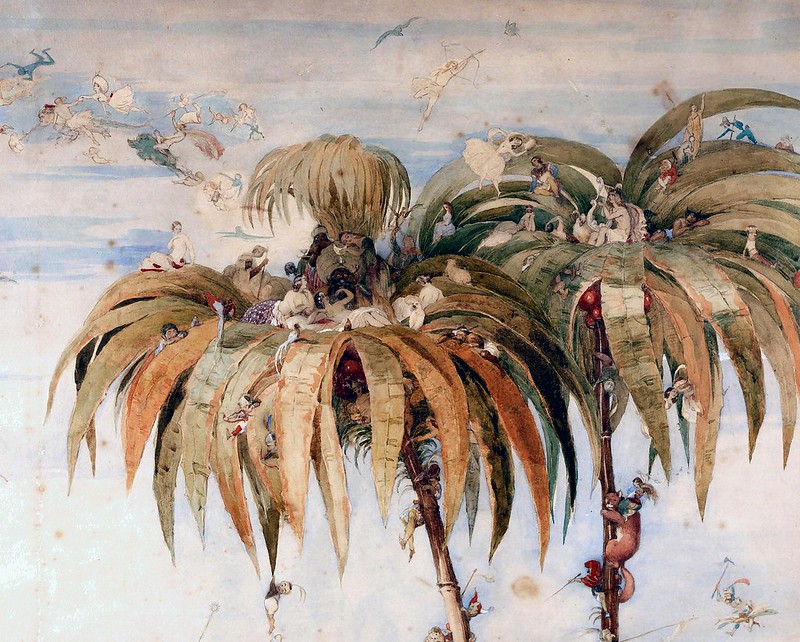
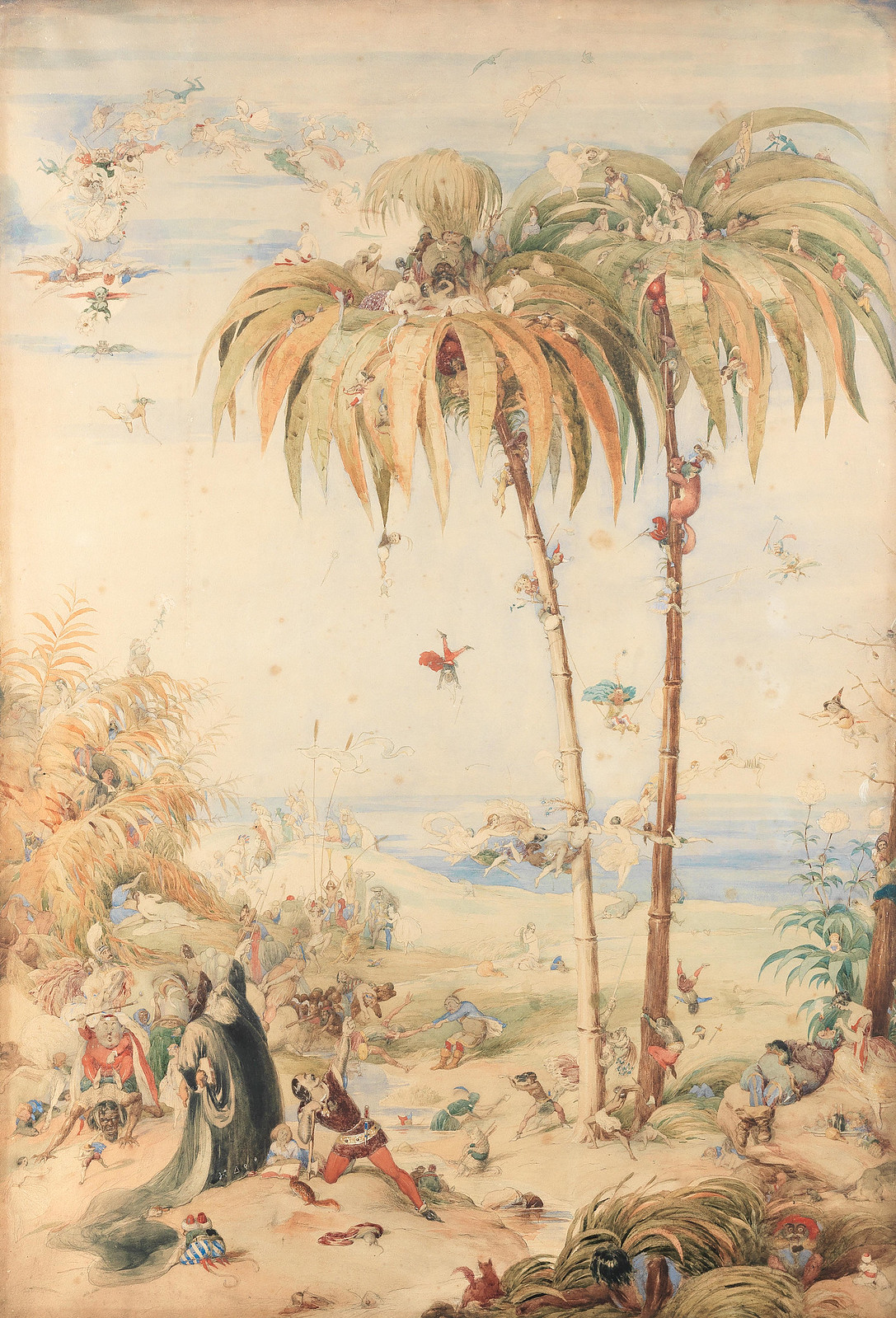 The Enchanted Fairy Tree, or a fantasy based on The Tempest by William Shakespeare
The Enchanted Fairy Tree, or a fantasy based on The Tempest by William Shakespeare The enchanted tree, a fantasy based on the "Tempest" (1845)
The enchanted tree, a fantasy based on the "Tempest" (1845) The Knight and the Jötun, 1865-75
The Knight and the Jötun, 1865-75 The Fairy's Flight
The Fairy's Flight
 The Woodman And The Elves
The Woodman And The Elves God Thor Chasing the Dwarfs
God Thor Chasing the Dwarfs God Thor Chasing the Dwarfs, 1878
God Thor Chasing the Dwarfs, 1878 Pursued by Elves
Pursued by Elves  The Fairy Tree, 1865
The Fairy Tree, 1865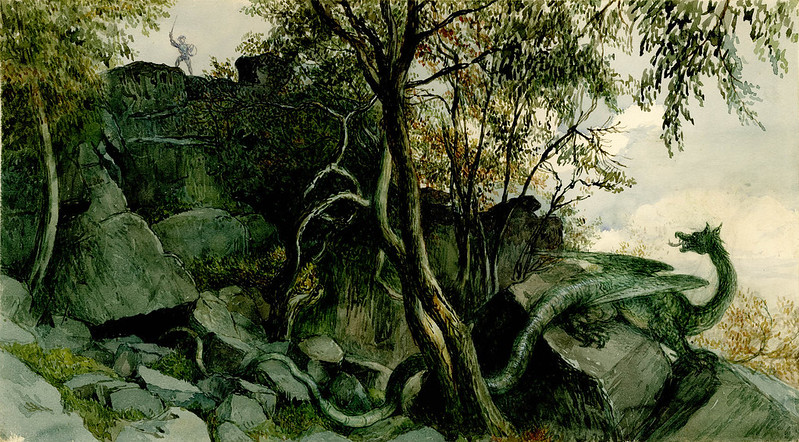 The Dragon of Wantley
The Dragon of Wantley The Altar cup in Aagerup, The Trolls Give Chase
The Altar cup in Aagerup, The Trolls Give Chase Scene from 'The Sleeping Beauty' 1863
Scene from 'The Sleeping Beauty' 1863 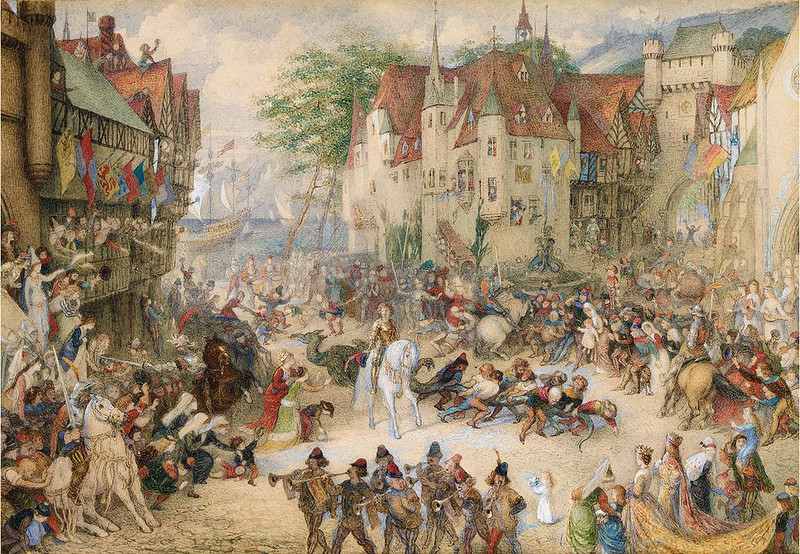 The Dragon Slayer
The Dragon Slayer The Little Princess's Birthday Dragon
The Little Princess's Birthday Dragon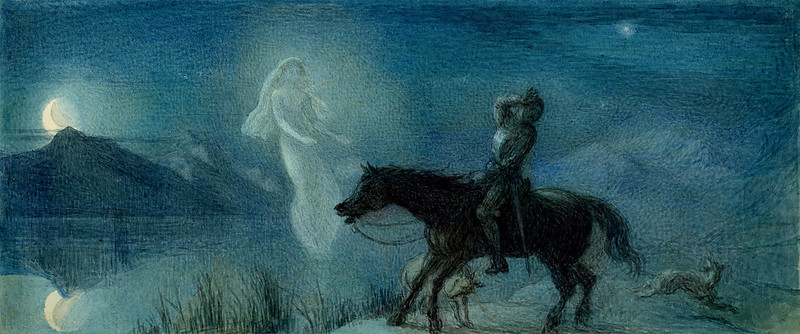 The Knight and the Spectre
The Knight and the Spectre The Witch's Home, No.2. "She's Off" 1875
The Witch's Home, No.2. "She's Off" 1875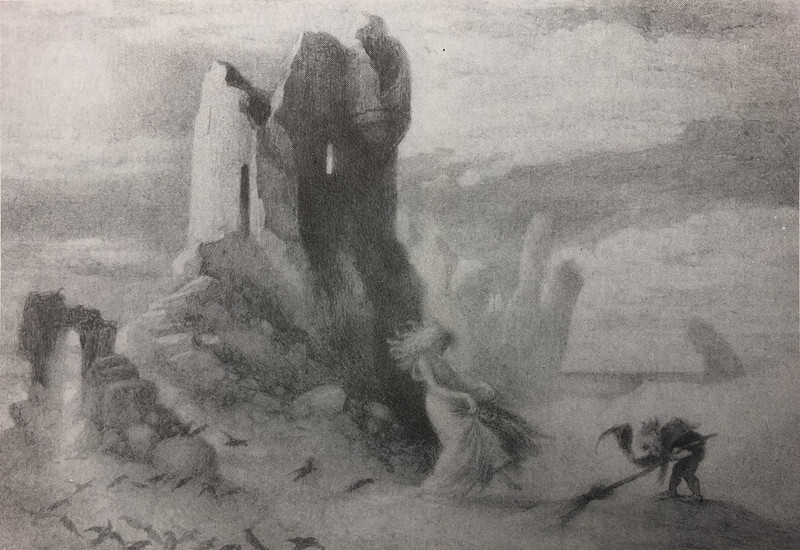
 The Witch's Home, No. 1 - Broom Waiting- Coming Out, 1870s
The Witch's Home, No. 1 - Broom Waiting- Coming Out, 1870s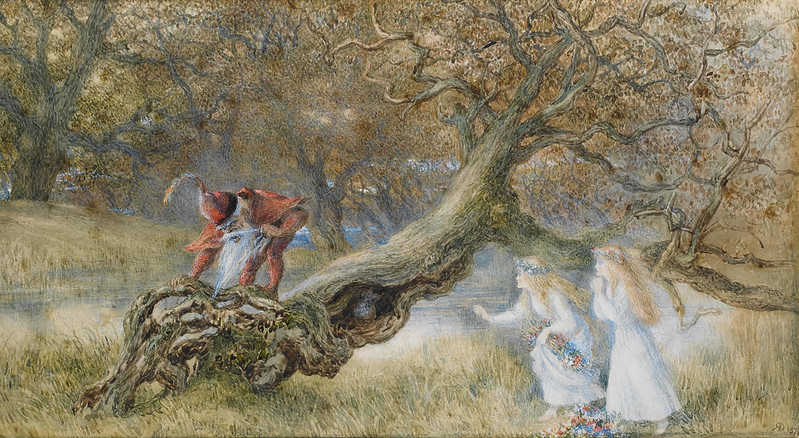 Snow White and Rose Red, 1877
Snow White and Rose Red, 1877 Elves in a Rabbit Warren, 1875
Elves in a Rabbit Warren, 1875 Fairies and Red-Squirrels in a Forest
Fairies and Red-Squirrels in a Forest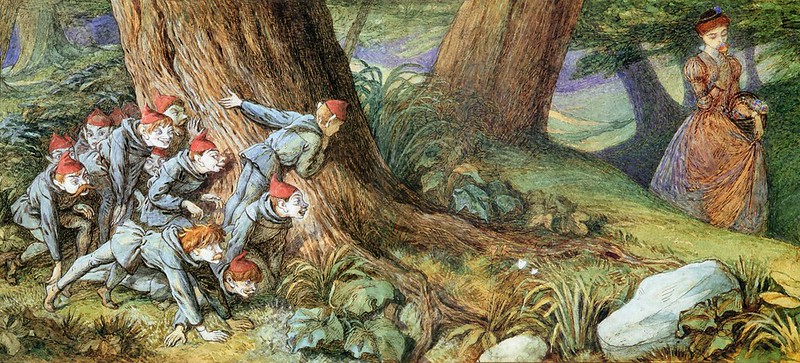 Wood Elves Hiding and Watching a Lady
Wood Elves Hiding and Watching a Lady In fairy land, an Elfin dance
In fairy land, an Elfin dance  Dancing Fairies
Dancing Fairies A Foxhunter's Nightmare
A Foxhunter's Nightmare
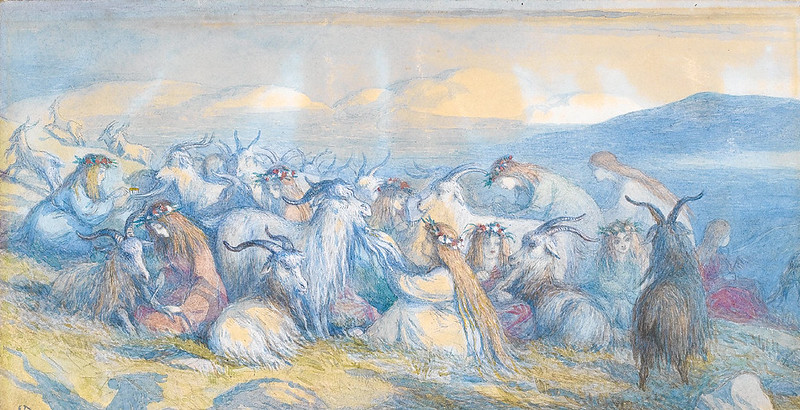
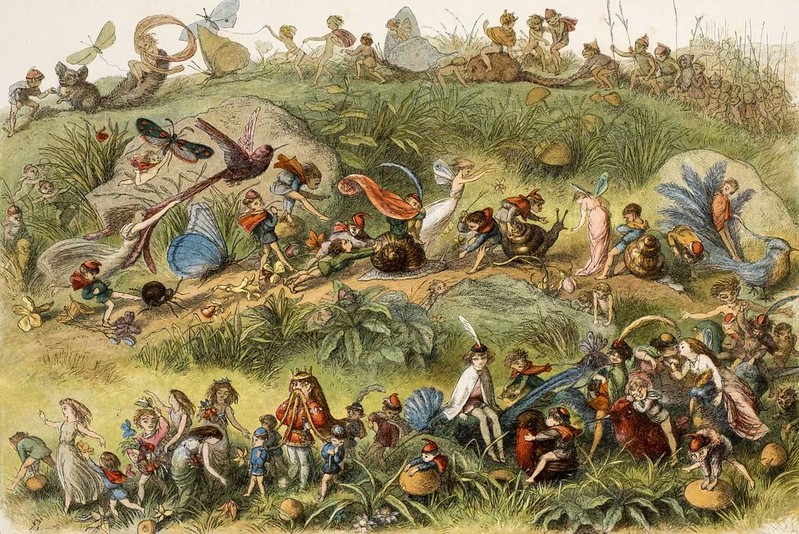 Triumphal March of the Elf-King, 1870
Triumphal March of the Elf-King, 1870 The knight pursued by sprites
The knight pursued by sprites The Pied Piper of Hamelin, 1879
The Pied Piper of Hamelin, 1879  Rumplestiltskin
Rumplestiltskin Punch's Vision At Stratford On Avon.jpg
Punch's Vision At Stratford On Avon.jpg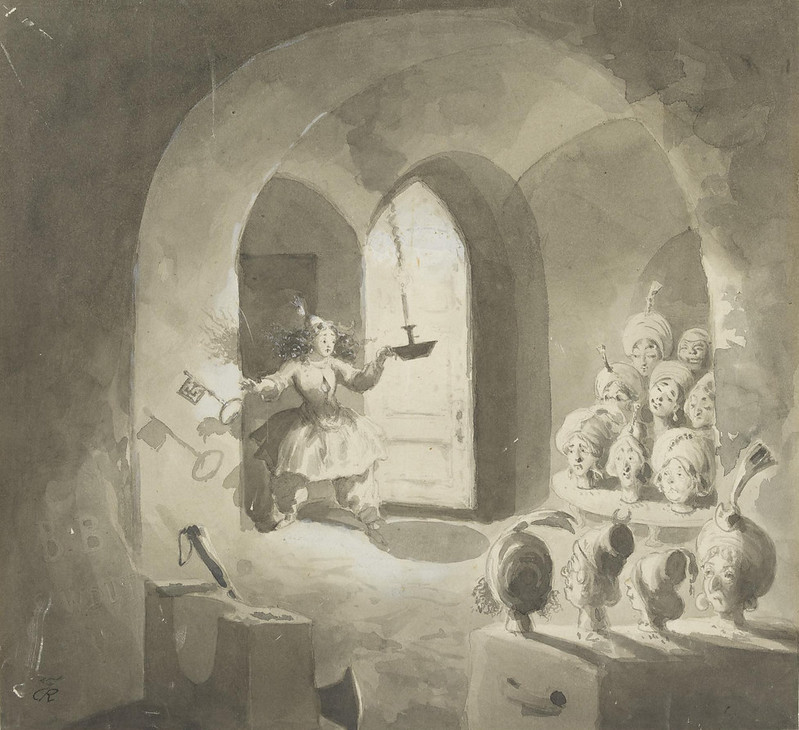 Illustration from "Bluebeards"
Illustration from "Bluebeards"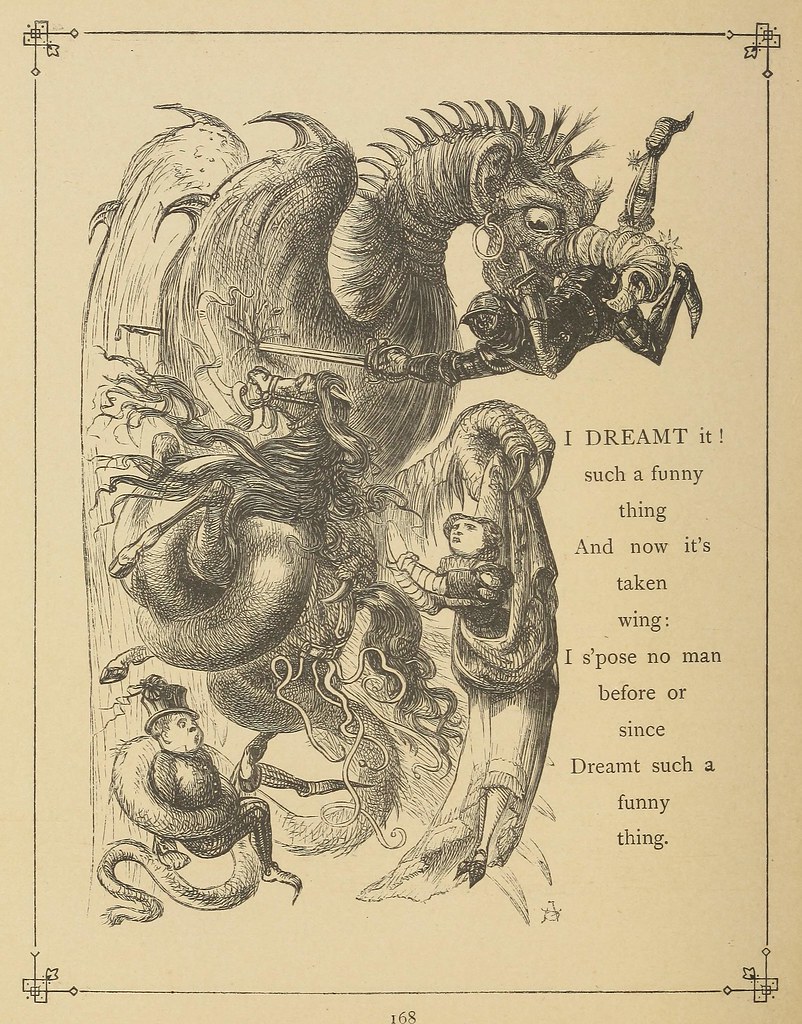 Illustration from "Puck on Pegasus" by Henry Cholmondeley-Pennell, 1868
Illustration from "Puck on Pegasus" by Henry Cholmondeley-Pennell, 1868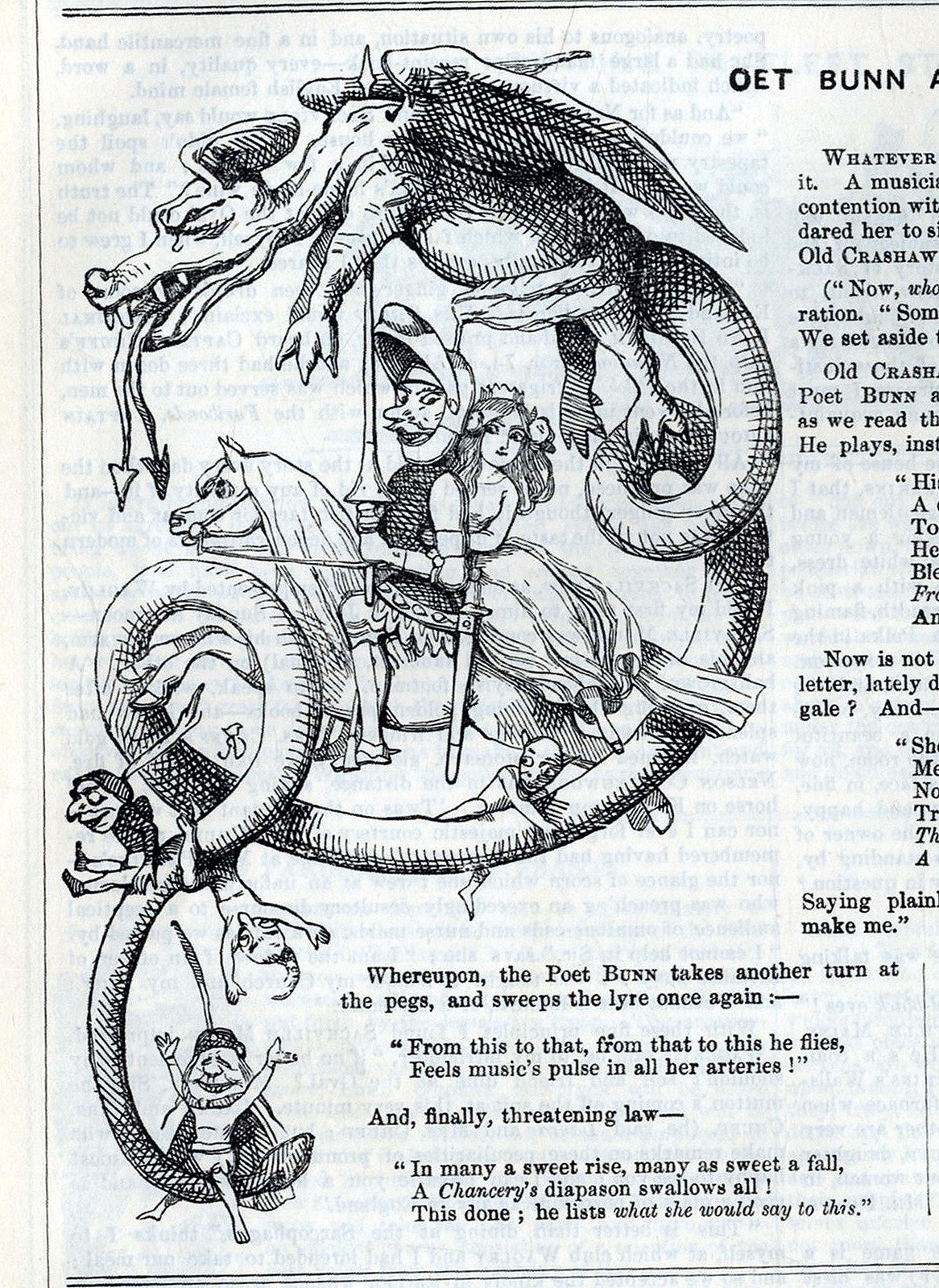 Punch Interior Art, 1847
Punch Interior Art, 1847 (Engraved by Dalziel) illustration for J R Planché, An Old Fairy Tale Told Anew, 1866
(Engraved by Dalziel) illustration for J R Planché, An Old Fairy Tale Told Anew, 1866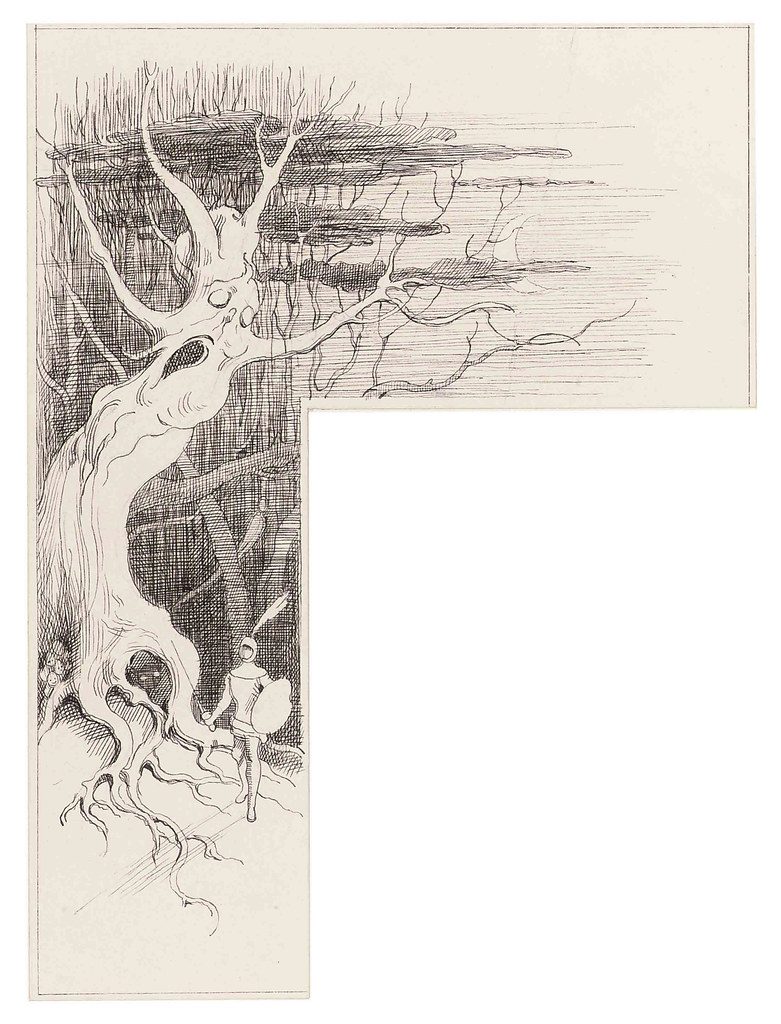

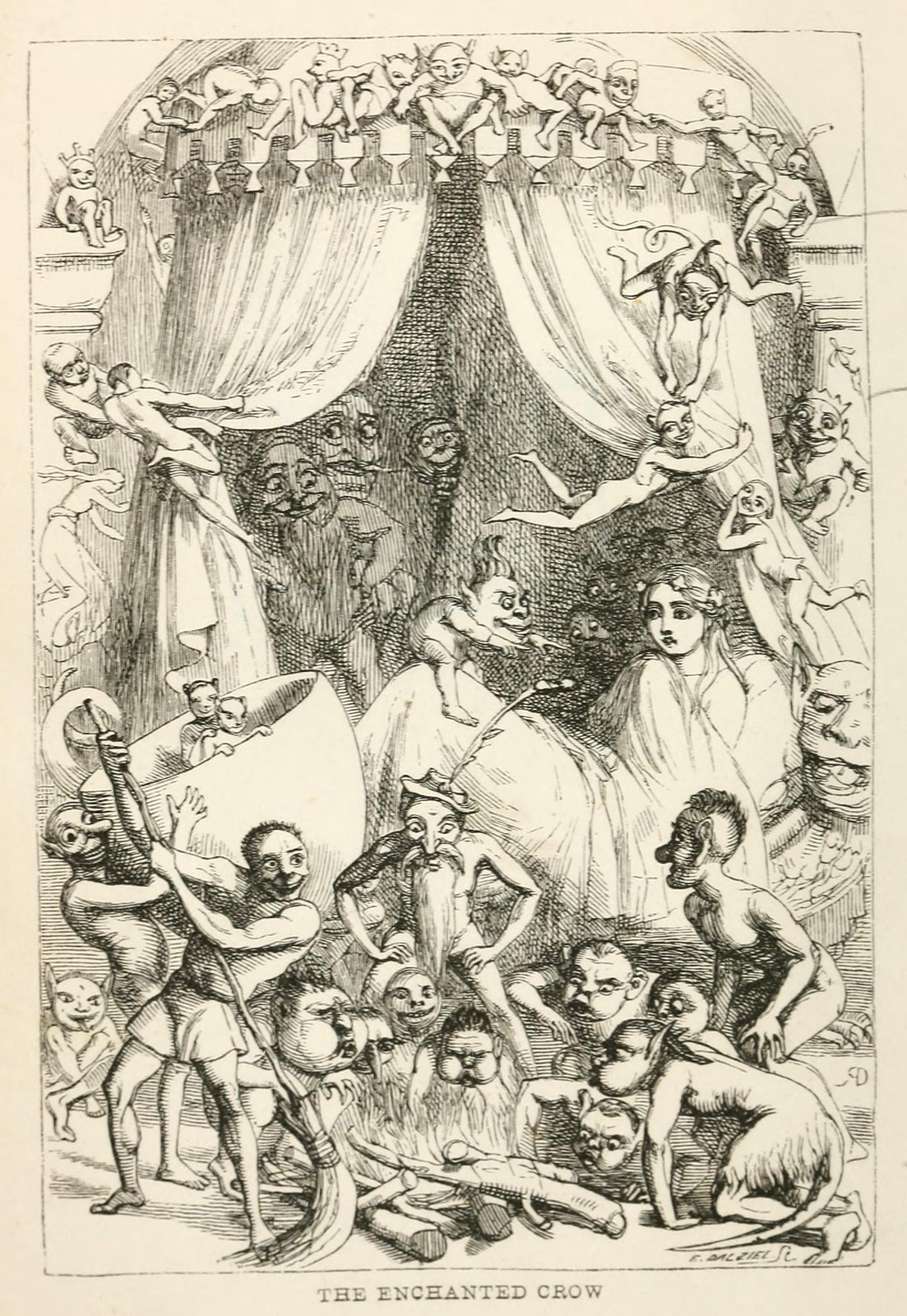 Frontpiece from “Fairy Tales From All Nations” by Anthony Reubens Montalba, 1850
Frontpiece from “Fairy Tales From All Nations” by Anthony Reubens Montalba, 1850 ‘Fortune’s Favourite’, from “Fairy Tales From All Nations” by Anthony Reubens Montalba, 1849
‘Fortune’s Favourite’, from “Fairy Tales From All Nations” by Anthony Reubens Montalba, 1849 ‘The Feast of the Dwarfs’, from “Fairy Tales From All Nations” by Anthony Reubens Montalba, 1849
‘The Feast of the Dwarfs’, from “Fairy Tales From All Nations” by Anthony Reubens Montalba, 1849 ‘Dragon Giant’, from “Fairy Tales From All Nations” by Anthony Reubens Montalba, 1849
‘Dragon Giant’, from “Fairy Tales From All Nations” by Anthony Reubens Montalba, 1849 ‘Snow White and Rosy-Red’, from “Fairy Tales From All Nations” by Anthony Reubens Montalba, 1849
‘Snow White and Rosy-Red’, from “Fairy Tales From All Nations” by Anthony Reubens Montalba, 1849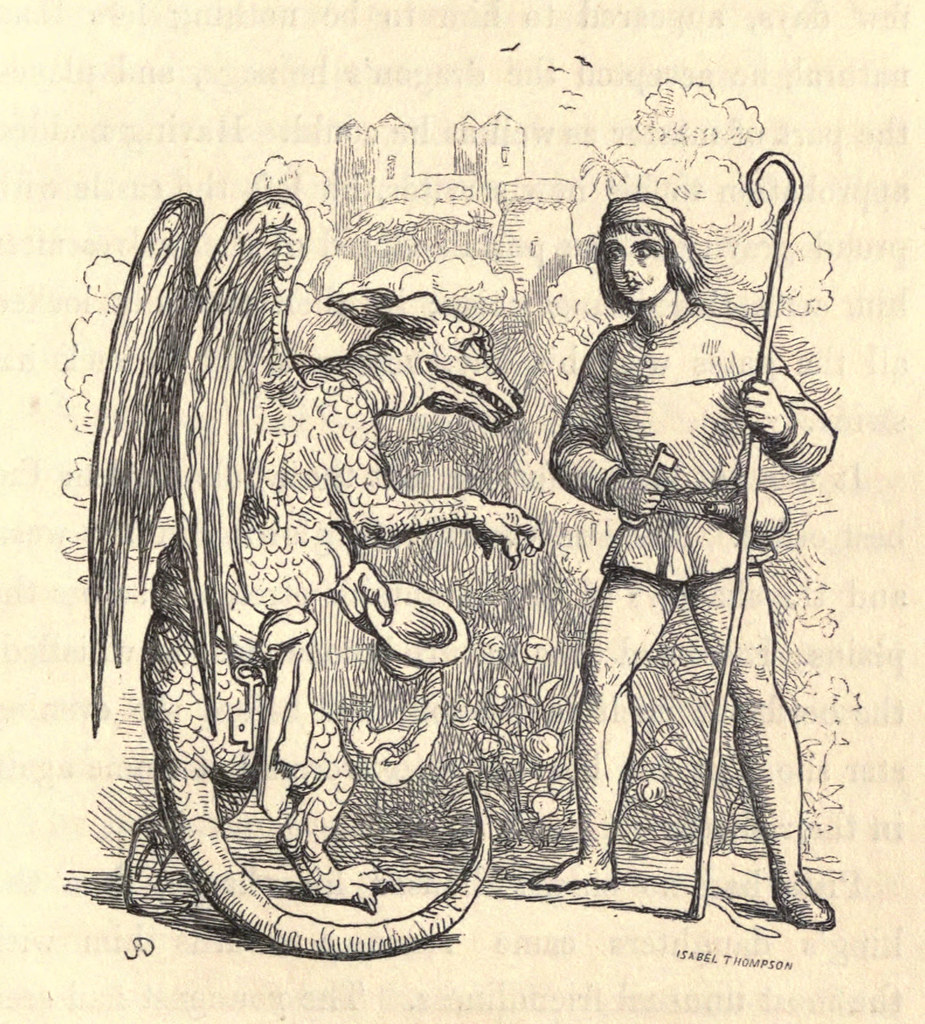 ‘Fortune’s Favourite, 2’, from “Fairy Tales From All Nations” by Anthony Reubens Montalba, 1849
‘Fortune’s Favourite, 2’, from “Fairy Tales From All Nations” by Anthony Reubens Montalba, 1849 ‘The Dragon Giant’, from “Fairy Tales From All Nations” by Anthony Reubens Montalba, 1849
‘The Dragon Giant’, from “Fairy Tales From All Nations” by Anthony Reubens Montalba, 1849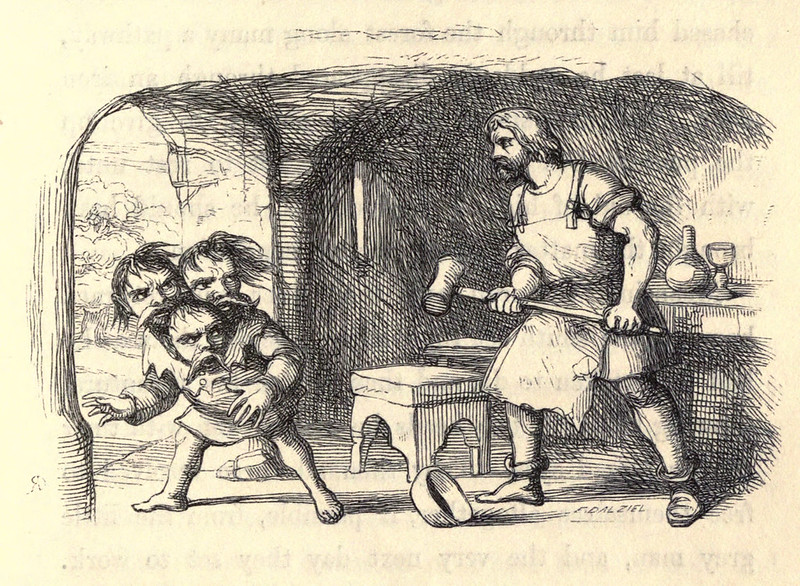 ‘The Little Man In Grey, from “Fairy Tales From All Nations” by Anthony Reubens Montalba, 1849
‘The Little Man In Grey, from “Fairy Tales From All Nations” by Anthony Reubens Montalba, 1849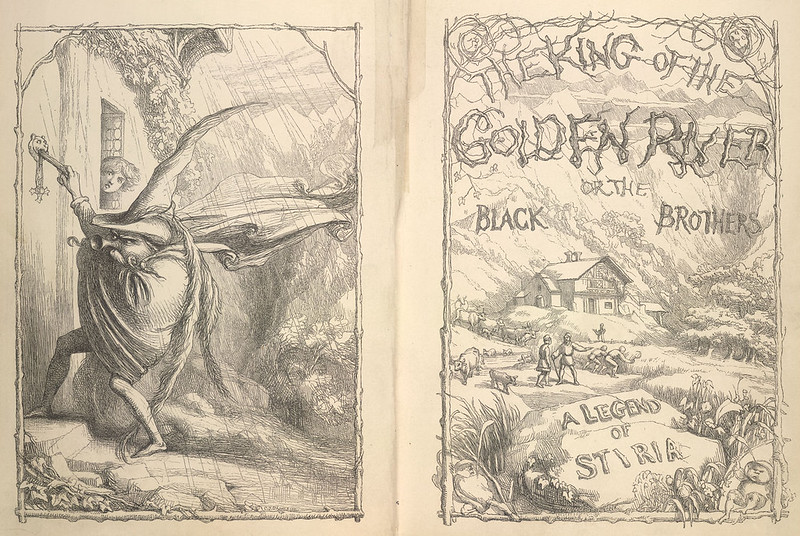 Interior art from "The King of the Golden River" by John Ruskin, 1885
Interior art from "The King of the Golden River" by John Ruskin, 1885 Color interior art from "The King of the Golden River" by John Ruskin, 1885
Color interior art from "The King of the Golden River" by John Ruskin, 1885 The Battle of Elves and Crows, 1874
The Battle of Elves and Crows, 1874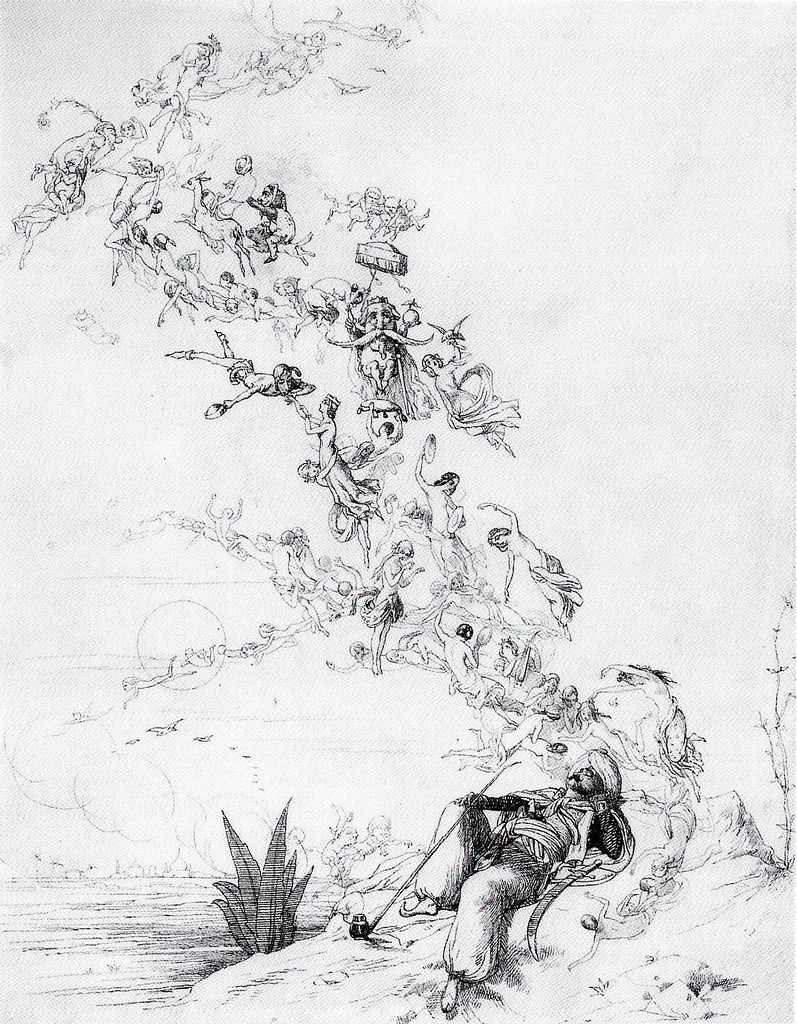 Dreams of fairies and mythical creatures
Dreams of fairies and mythical creatures Dick Doyle Tortured by Procession Ideas, from Dick Doyl's Journal
Dick Doyle Tortured by Procession Ideas, from Dick Doyl's Journal Drawing for The Brothers Grimm tale "The Fairy Ring" The knight intrudes on the dining witch and dragon, 1846
Drawing for The Brothers Grimm tale "The Fairy Ring" The knight intrudes on the dining witch and dragon, 1846 Drawing for The Brothers Grimm tale "The Fairy Ring" 1846
Drawing for The Brothers Grimm tale "The Fairy Ring" 1846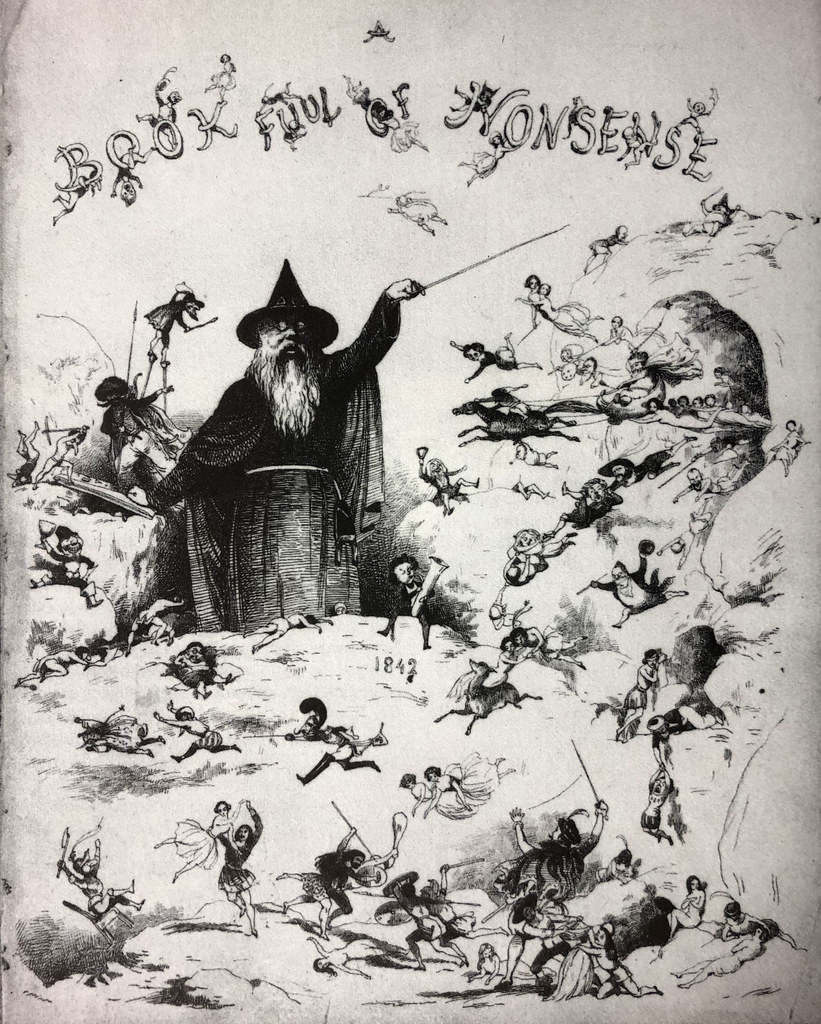 A Book Full of Nonsense, Title Page
A Book Full of Nonsense, Title Page Illustrated Letters and More... From Hambourgh, 1948, Interior Art
Illustrated Letters and More... From Hambourgh, 1948, Interior Art  Illustrated Letters and More... From Hambourgh, 1948, Interior Art
Illustrated Letters and More... From Hambourgh, 1948, Interior Art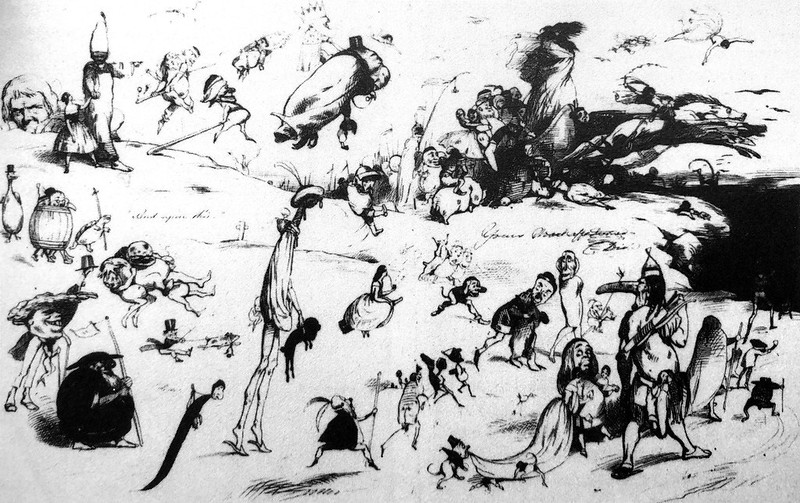 Doyle's nonense style monsters, in a letter to his father, 1843
Doyle's nonense style monsters, in a letter to his father, 1843 Famous Great Sea Serpent, Punch Almanack, 1849
Famous Great Sea Serpent, Punch Almanack, 1849"Known, variously, by the nickname 'Dicky' and the pseudonym 'Dick Kitcat', Richard Doyle was one of the most popular illustrators of his time. A natural heir to George Cruikshank, Doyle was a humourist whose work ranged from social satire to representations of fairies and the 'little people'. Characterized by lyricism and lightness of touch, he worked for Punch during the formative years of the 1840s, and later became a sensitive interpreter of Thackeray. His 'elfin' (Muir, 102) masterpiece is In Fairyland (1869-70), a colour-book ostensibly designed for children which also appealed to adults and addressed adult themes in a coded form. Luxuriously produced, with intricate engravings on wood by Edmund Evans, this work set new standards in the field of book-production.
Richard Doyle was born at 17 Cambridge Terrace, London, in September 1824. His father was the Irish cartoonist John Doyle (1783-1851), whose satirical prints were a scourge of the 1820s and thirties. Doyle was one of seven children, and all three of his (surviving) brothers were gifted artists. James (born 1822) was the author and illustrator of Evans's elaborate colour-book, The Chronicle of England (1864); Henry (b.1827) was an illustrator of note; and so was his youngest brother, Charles (born 1842, the father of Arthur Conan Doyle) However, Richard was unquestionably the most able of an exceptional family. Educated at home by his father, Dicky Doyle was a precocious talent.
Aged only sixteen, he published a series of humorous envelopes for the newly-established Post Office, following this up with a satirical comment on Victorian neo-medievalism in the form of The Tournament (1840), a series of cartoons which was also a droll pastiche of the Germanic 'outline style'. In 1843 he joined the staff of Punch and in 1844 designed the intricate front cover, a teeming mass of fairies and elves milling around a rusticated title; revised in 1849, this manic opener established the magazine's emphasis on irreverent mockery, and was used as its signature image until the middle of the twentieth century. Doyle also provided quaint initials, by turns lyrical and surreal, and larger satirical works such as 'The Gold Rush' and 'Manners and Customs of Ye Englyshe' (1849). A devout Catholic who valued his Irish ancestry, he left the magazine in 1850 following an attack on Rome.
Doyle worked thereafter as a freelance designer illustrating children's books, notably Mark Lemon's The Enchanted Doll (1849)and Ruskin's The King of the Golden River (1851). Other works, this time for adults, included The Foreign Tour of Messrs. Brown, Jones and Robinson (1854) in which he ridiculed the current vogue for tourism by showing a group of Englishmen bumbling their way around Europe, and Thackeray's pastiche of Ivanhoe, Rebecca and Rowena (1850). His collaboration with Thackeray was extended (and tested) in his detailed interpretation of the same author's acerbic novel of manners, The Newcomes (1854-55). This work, his only substantial commission for a contemporary novelist, revisited the blending of fantasy and psychological drama that had earlier characterised his work for Dickens's The Chimes (1845).
In the sixties his publications divided fairly evenly between fairy books for children (an activity further supported by watercolours) and satirical works such Bird's Eye Views of Society , a series of fold-outs which helped to establish The Cornhill Magazine in 1861-2. His final, most impressive work was In Fairyland (1870, published 1869). Presented as a rich combination of coloured wood-engravings, an accompanying poem by William Allingham and an elaborate binding designed by the artist, In Fairyland was self-consciously designed as a treasure. However, its extravagant price (31 shillings and 6d)ensured that it was far too expensive for all except the most middle-class of households. Two thousand were printed, but records in the Longman Archive (University of Reading, United Kingdom) show that few were sold, a situation which led to the sale of remainders, in the form of a reissue with a revised title-page, in 1875.
In Fairyland's economic failure reflected a change in taste and Doyle subsequently slipped into obscurity. He died of apoplexy (having collapsed on the steps of his club) in 1883, at the unusually young age of fifty nine. Following his death his juvenilia was reissued, principally his Journal of 1840 — a vivid visual record of the life of the times — Homer for The Holidays (1836), and a multi-coloured fantasy, Jack the Giant Killer. Doyle's reputation was eclipsed firstly by the artists of the 1860s and later by the sophisticated urbanities of Beardsley, Ricketts and the artists of the nineties.
Doyle's oeuvre is well-known and his personal life and social milieu are equally well-charted, notably in Daria Hambourg's critical introduction (1948) and Rodney Engen's more extended analysis of 1983. He was a friend of Holman Hunt (Engen, 115-116) and was at home in the company of Millais and Rossetti, Dickens and Cruikshank. His special friend was Thackeray, who, like all of Doyle's associates, made a point of noting his sense of humour and easy charm.
Yet Doyle was also known for his lack of lack of reliability. Characterized by a petulant dilatoriness and lack of focus, he was a poor collaborator. He was consistently late with his illustrations for The Newcomes, only meeting his commitments when Thackeray confronted him with the prospect of the work being passed back into the author's own hand. The Dalziels, who commissioned and engraved several of his works, were similarly frustrated, reporting how An Overland Journey to the Great Exhibition (1851) failed to exploit the interest generated by the event because the artist was outrageously slow and unresponsive. Doyle's excuses were often absurd, and the Dalziels reported that on one occasion he failed to meet a deadline because he had 'not got any pencils' (The Brothers Dalziel, 58). Such amateurism hampered the artist's success. Several books did not appear because he lacked the application needed to finish them, and completed work was often uneven in quality, patchily uniting accomplished designs and illustrations that were 'deplorably pedestrian' (Muir, p.102). Dicky Doyle's work is nevertheless a charming combination of comic burlesque, delicate drawing, a magical representation of the fairy world, mythology, satire, and intelligent interpretation. Widely collected, it visualizes mid-Victorian culture at its most wistful and amusing." - quote source
Image sources include Archive.org, Fulltable.com, Christie's, Heritage Auctions, Sofi's Flickr, Amber Tree Flickr,
The work of Richard's brother "Charles Altamont Doyle" who himself was the father of Sherlock Holmes author "Arthur Conan Doyle" was posted here a few days ago.
Richard Doyle's illustrations of Jack the Giant killer were recently posted here. His work was previously posted here in 2007.

No comments:
Post a Comment